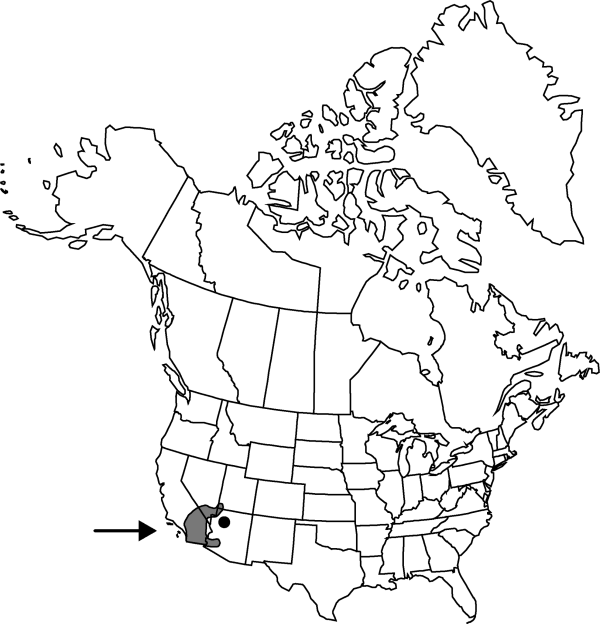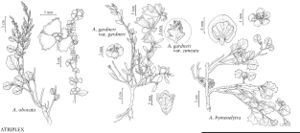Atriplex hymenelytra
Proc. Amer. Acad. Arts 9: 129. 1874.
Shrubs, dioecious, 3–15+ dm, as wide, unarmed. Leaves persistent, alternate, petiolate; blade greenish to silvery white, orbiculate to reniform or oval, 10–40 mm, as wide or wider, prominently dentate, teeth to 10 mm, permanently scurfy. Staminate flowers yellow to purple-brown, in clusters 3–4 mm thick, borne in panicles to 3 cm. Pistillate flowers borne in inflorescences similar to staminate ones. Fruiting bracteoles sessile, rather prominently veined, orbiculate to reniform, strongly compressed, 7–10 × 7–10 mm, thin, united at base, margin entire to crenate, glabrous, lacking processes. Seeds brown, 2 mm wide; radicle sublateral. 2n = 18.
Phenology: Flowering spring.
Habitat: Warm desert shrub, on dry saline alluvial fans and hills
Elevation: 80-1200 m
Distribution

Ariz., Calif., Nev., Utah.
Discussion
Atriplex hymenelytra occurs with saltbush, Larrea-Ambrosia, ephedra, and yucca. This is a handsome, rounded shrub with silvery white foliage, sometimes contrasting strongly with the peculiar substrates on which it grows. Its relationships to other of the southwestern species are recondite, but possibly it is allied to A. confertifolia, with which C. A. Hanson (1962) suggested an affinity.
Selected References
None.
Lower Taxa
"wider" is not a number."thick" is not a number.
